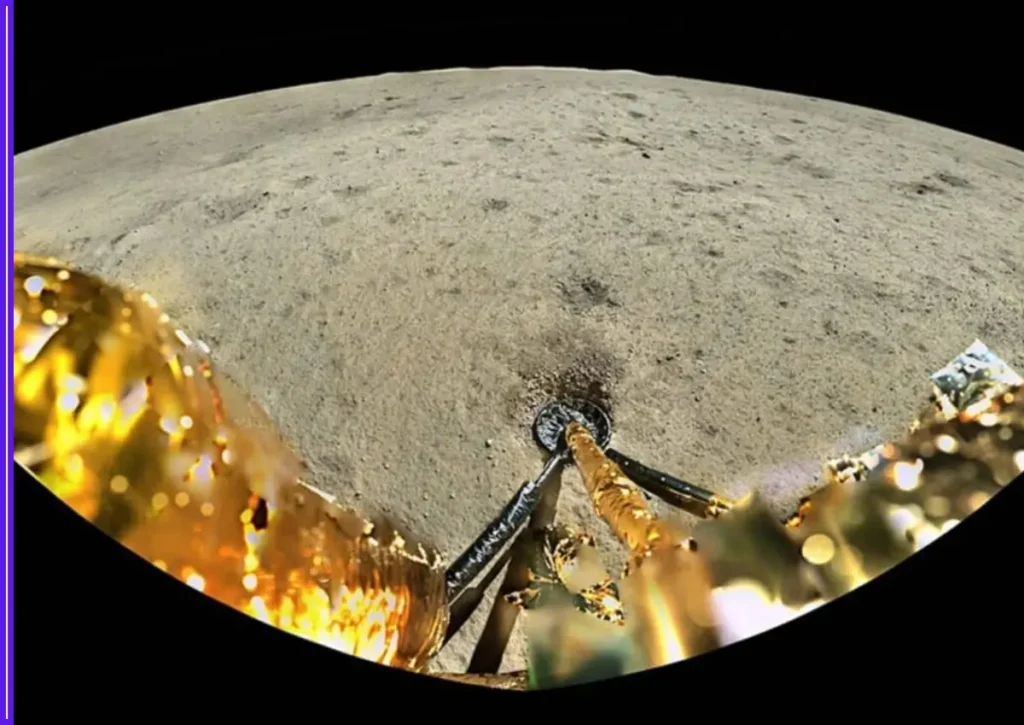Beijing,China’s Chang’e-6 lunar mission has provided the first scientific evidence on the geological and magnetic history of the Moon’s far side, revealing multiple volcanic eruptions and a possible revival of its magnetic field. The findings, based on lunar samples returned to Earth in June, were published in peer-reviewed journals this week.
The Chang’e-6 probe collected 1.935 kilograms of lunar soil from the South Pole–Aitken Basin, the largest and oldest known impact crater on the Moon. Scientists analyzing the samples identified two distinct volcanic episodes — one dating back to approximately 4.2 billion years ago, and another around 2.8 billion years ago.

According to researchers from the Chinese Academy of Sciences, the older samples likely originated from deeper layers beneath the surface, while the younger ones suggest lava flows that occurred much later than previously recorded. The discovery indicates that the Moon’s far side experienced volcanic activity for over 1.4 billion years.
In addition to volcanic evidence, the samples also showed traces of magnetic properties that suggest the Moon’s magnetic field may have briefly reappeared around 2.8 billion years ago. This contradicts earlier theories that the lunar dynamo — the process generating a magnetic field — ceased around 3.1 billion years ago.
Scientists also found that the Moon’s far side mantle is significantly drier than its near side. The analysis revealed lower concentrations of water and incompatible elements, suggesting different thermal and chemical evolution between the two hemispheres.
Lead isotope studies further supported the theory that a global magma ocean once covered the Moon. The new data points to different cooling and crystallization patterns across the near and far sides, providing insight into why the two hemispheres differ in crust thickness and volcanic features.
Chang’e-6 is the first mission in history to retrieve physical samples from the Moon’s far side. The Chinese space agency has confirmed that further analysis of the returned materials is ongoing, including mineral composition, isotope dating, and geophysical modeling.
The findings are expected to influence future lunar exploration plans. China’s next missions, Chang’e-7 and Chang’e-8, are scheduled for the coming years and aim to explore potential landing sites for a long-term lunar base.









